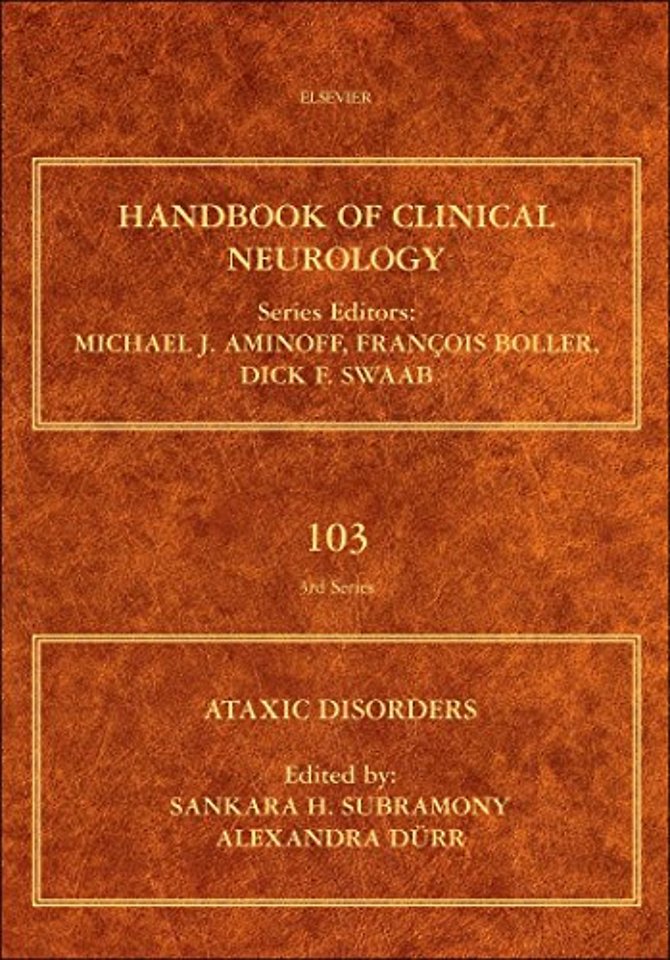<p>BASIC ASPECTS<br>The cerebellum - structure and connections; Physiology of clinical dysfunction of the cerebellum; Oculomotor aspects of the hereditary cerebellar ataxias; Magnetic resonance and nuclear medicine imaging studies in ataxic disease; Neuropathology of degenerative ataxias; Approach to ataxic diseases</p> <p>ACQUIRED ATAXIAS<br>Acquired ataxias, infectious and para-infectious; Ataxia in patients with brain infarcts and hemorrhages; Ataxia resulting from posterior fossa tumors of childhood and other mass lesions; Nutritional cerebellar degeneration, with comments on its relationship to Wernicke disease and alcoholism; Immune-mediated acquired ataxias; Toxic agents causing cerebellar ataxias; Paraneoplastic cerebellar degeneration</p> <p>DEGENERATIVE ATAXIAS<br>Epidemiology and population genetics of degenerative ataxias; Sporadic adult onset ataxia of unknown aetiology</p> <p>DEGENERATIVE ATAXIAS – MITOCHONDRIAL, AUTOSOMAL RECESSIVE AND X-LINKED<br>Overview of autosomal recessive ataxias; Friedrich’s ataxia; Ataxia with vitamin E deficiency and abetalipoproteinemia; Ataxia-telangiectasia; Autosomal recessive cerebellar ataxias with oculomotor apraxia; Other autosomal recessive and childhood ataxias; Ataxia in mitochondrial disorders; Fragile X-associated tremor/ataxia syndrome</p> <p>DEGENERATIVE ATAXIAS – AUTOSOMAL DOMINANT<br>Overview of autosomal dominant ataxias; Spinocerebellar ataxia type 1, 2; Machado-Joseph disease/spinocerebellar ataxia type 3; Spinocerebellar ataxia type 5, 6, 7; Clinical and genetic features of spinocerebellar ataxia type 8; Spinocerebellar ataxia type 10, 11, 12, 13, 14, 15, 20, 25, 28; Other spinocerebellar ataxias; Dentatorubral-pallidoluysian atrophy; Episodic ataxias 1 and 2</p> <p>OTHER ISSUES<br>Ataxias related to sensory neuropathies; Frontal lobe ataxia; Balance and gait problems in the elderly; Treatment and management issues in ataxic disease</p>

